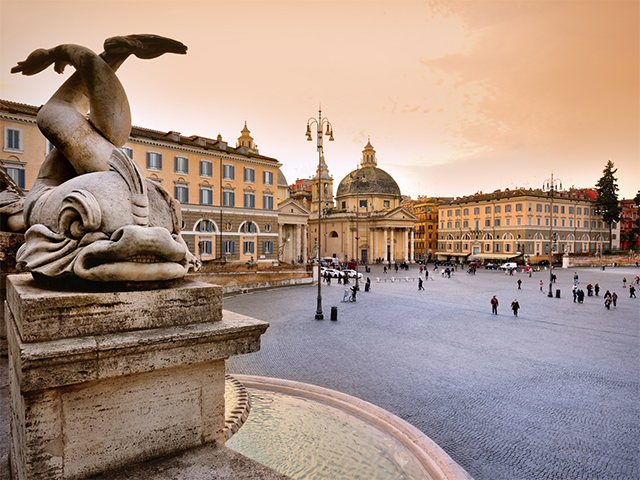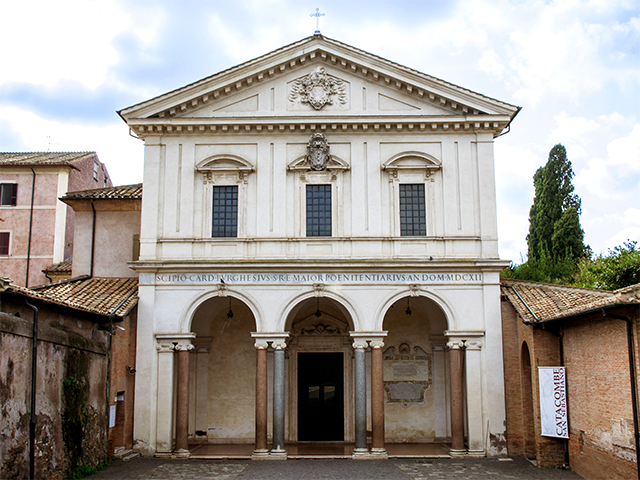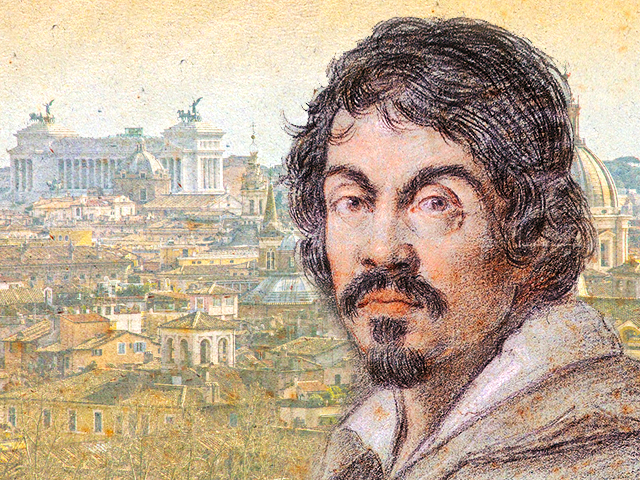The Basilica of Saint John in the Lateran
What to see in the Basilica of Saint John in the Lateran in Roma: history, description, architecture and opening hours to visit Borromini's masterpieceThe Basilica of Saint John in the Lateran, defined also as "mother of all churches" is one of the four Major Basilicas of Rome, together with St. Peter's, Saint Paul Outside the Walls and Santa Maria Maggiore. It is part of a great monumental complex including the great obelisk, the Lateran Palace and the Sanctuary of the Holy Stairs.
Considered one of Borromini's masterpieces, this splendid cahtedral, established between 311 and 312 AD by Pope Miltiades, is located over the Celio Hill and it is beyond doubt an essencial destination for tourists and pilgrims from all over the world.
Let's discover it!
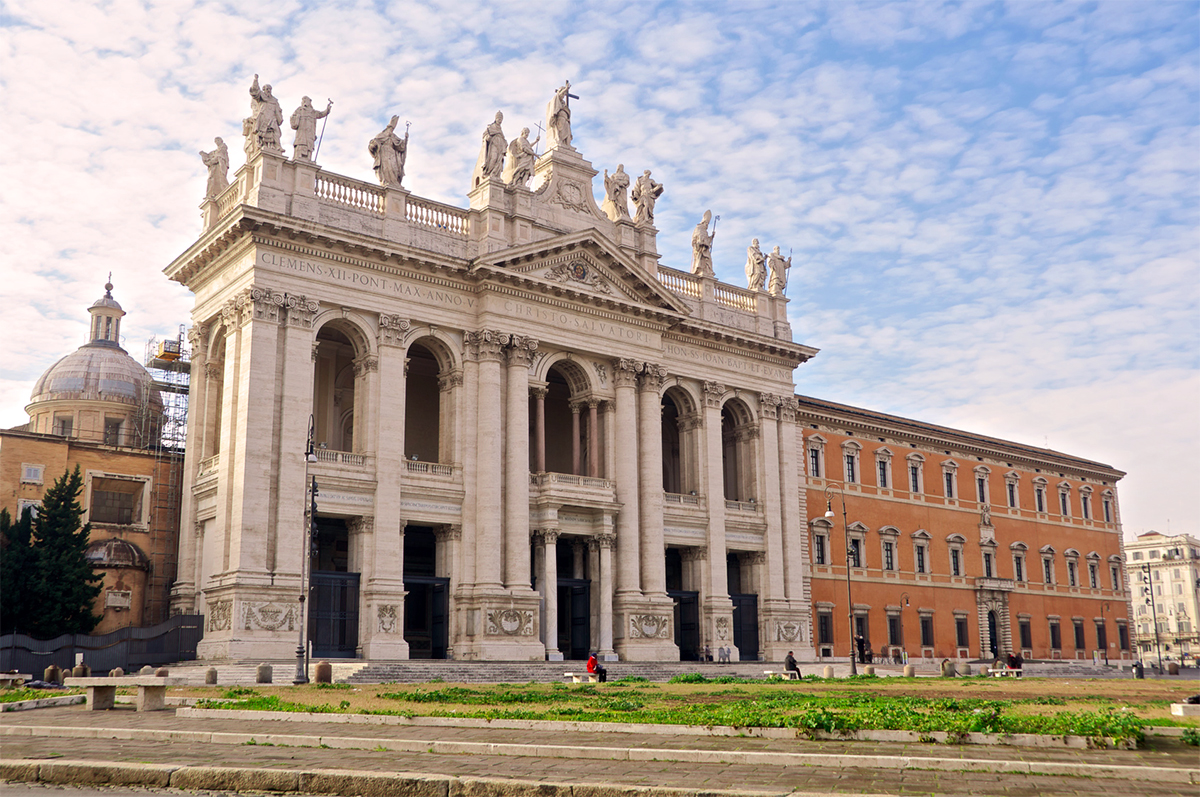
Basilica of Saint John in the Lateran - Rome
A LITTLE BIT OF HISTORY
First of all, we must point out that the real name of the church is Basilica of the Most Holy Savior and Saints John the Evangelist and the Baptist and it is the ecclesiastical seat of the Pope, as Bishop of Rome, which means that only the Holy Father can celebrate the mass from its altar.
The Basilica of Saint John appearde in the 4th century AD in an area that was known at the time as Horti Laterani, old estate of the Laterani Family. The property was confiscated under the empire of Neron.
Restored to the Laterani by Settimio Severo, the property and the palace that stood there finally reached emperor Constantine when he married in 307 Fausta, daughter of the former emperor Maximian.
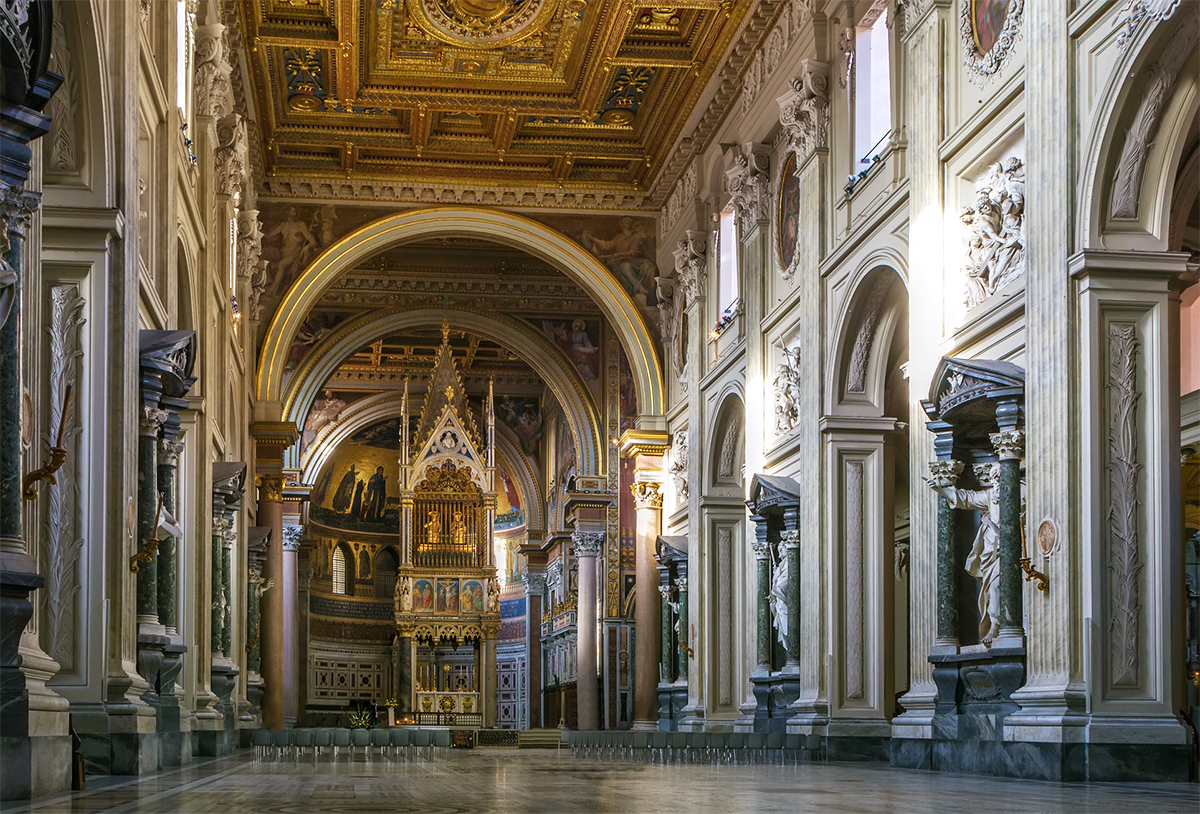
Basilica of Saint John in the Lateran - Main nave
The residence was at that time known as Domus Faustae until Fausta decided to donate it to Pope Miltiades in order to build his own papal residence. Tradition says that Constantine, after winning the battle of the Milvian Bridge (312 AD), as sign of recogition towards Christ, commanded to build the basilica in the vicinity of the palace.
Considering that it comes about 14 years before the foundation of the Basilica of Saint Peter, the Basilica of Saint John is absolutely the oldest basilica in the world.
SAINT JOHN IN THE LATERAN: THE INTERIOR OF THE BASILICA
Before Pope Innocence III entrusted the restoration works to Borromini (seventeenth century), the Basilica of Saint John was over the years continuosly enriched by artworks and monuments. Worth noting the famous fresco by Giotto representing Pope Boniface VIII announcing the first Jubilee in 1300, the panelled ceiling of the main nave designed by Pirro Ligorio and decorated by Daniele da Volterra and the floor in Cosmati style.
Borromini enclosed the columns of the old central nave with nine pilars, alternated with archs, over which he placed niches in the form of a tabernacle, reusing part of the old green marble columns supporting the archs of the lateral aisles. Inside the niches are the monumental statues of the 12 Apostoles among which stand out Saint Peter, Saint Paul and Saint John Evangelist.
We will reveal a little secret... between one arch and the other, if you lean on a column, you will be able to confide anything to someone else standing on the opposite side and, thanks to an acoustic effect, no one else will hear what you say. Seeing is believing!
At the end of the central nave, after the great triumphal arch, we find the papal altar that keeps an elegant tabernacle of the second half of the fourteenth century, ornated by frescoes attributed to Barna da Siena. Over the tabernacle, behind a grating, are collected the relics of Apostles Peter and Paul in silver cases.
From the left aisle you can access the Corsini Chapel, housing the funeral monument of pope Clemens XII, by the Tuscan architect Alessandro Galilei, who also designed the façade of the Basilica. Finally, there is the wonderful cloister that we are about to discover.
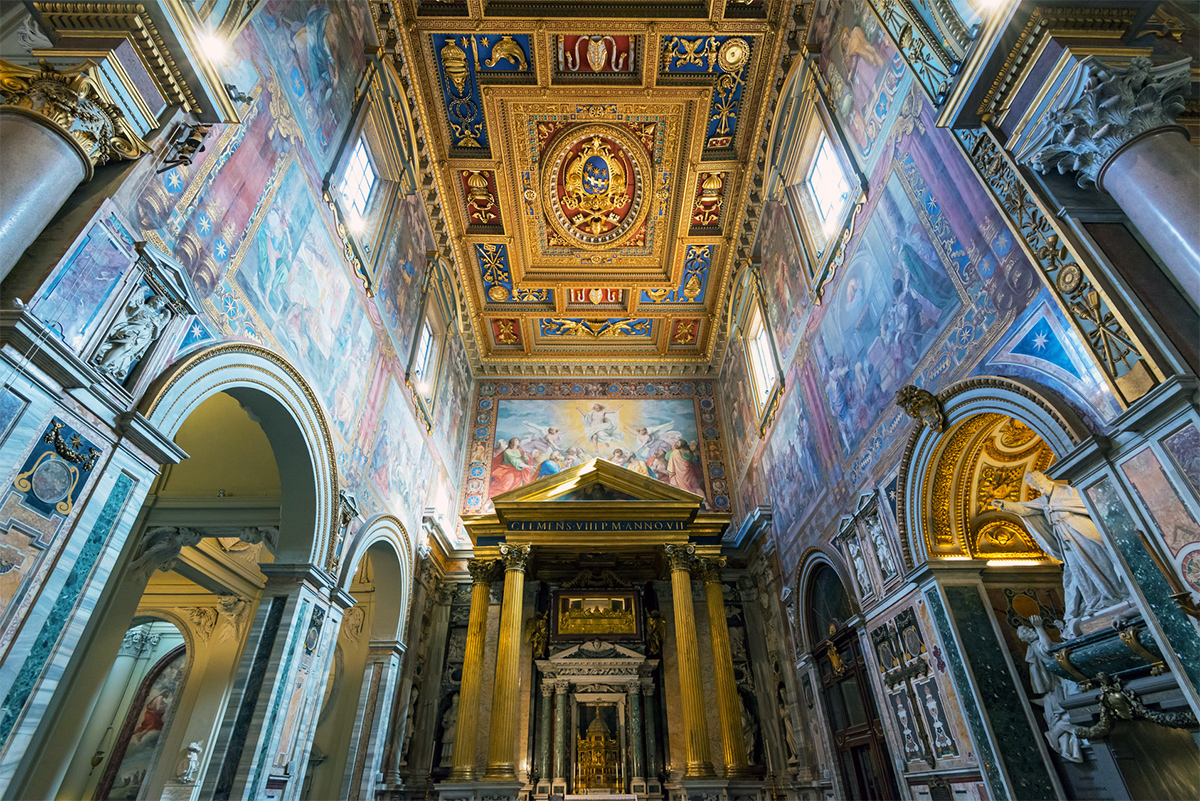
Basilica of Saint John in the Lateran - Ceiling and reliquary
SAINT JOHN IN LATERAN: THE CLOISTER
The Lateran Cloister, built between 1215 and 1232 by Vassalletto, represents one of the best Cosmatesque architecture masterpieces, a real treasure due to its elegance and simplicity. It is ornated with tomb slabs and remains from Roman and Early Christian excavations. With 36 meters per side, it's absolutely the biggest cloister in Rome.

Cloister of Saint John in the Lateran
In the center of the courtyard there is a garden housing the Well of the Samaritan woman, dating back to the 9th century. On the sides of the passage that give access to the garden, are placed sphinxes and lions, constituting the base of the columns.
Among the works here, are worth mentioning the copy of the papal bull, issued by Gregorius XI treating the Archbasilica supremacy, the sepulcral monument by Arnolfo di Cambio meant for cardinal Riccardo degli Annibaldi and some fragments of Cosmatesque work belonging to the Altar of The Magdalene, once placed in the Lateran Basilica.
THE HOLY STAIRS AND THE HOLY OF HOLIES
Once outside the Basilica, go to the Sanctuary of the Holy Stairs, pilgrimage destination for Catholics from all over the world.
According to tradition, Saint Helene, mother of Constantine, during her pilmgrinage to the Holy Land, had the staircase that Jesus climbed in his way to the Sanhedrin in front of Pontius Pilate, short before being crucified, dismantled and taken to Rome. Today, the Stairs are composed by 28 steps that can only be climbed on your knees.
On the top of the Holy Stairs, a window protected by a very thick glass and by a grating allows to watch inside the Holy of Holies. It's the Pope's private chapel, considered still today one of the most sacred places in the world: the sentence that stands out under the main fresco reads "Non est in toto sanctior orbe locus" that means exactly "There is not a more holy place in the world".
This article ends here. Now you only need to read the box at the bottom of the article to learn all details about opening times, prices and useful information for your visit.
Useful information
- HOW TO GET THERE
- From the Port of Civitavecchia: Get to Civitavecchia Train Station and get on the first regional train bound for Rome. After about 1 hour and 10 minutes get of at Roma Termini and from there, take the metro line A towards Anagnina. Get off after 3 stops at San Giovanni and you are there. The Basilica is a stone's throw away.*For train timetables refer to Trenitalia official site.
- TIMETABLES
- Basilica: 7.00 - 18.30 (last exit at 18.45)Cloister: 9.00 - 18.00Baptistery: 7.00 - 12.30 / 16.00 - 19:00Historical Archive: Mon - Fri 8.30 - 13.00Museum of the Basilica: 10.00 - 17.30
- PRICES
- Basilica: free admissionCloister: €2Audioguides available in Italian, English, German, Spanish and French for €5 (€ 4 for students and over 65).



 PORT MOBILITY CIVITAVECCHIA
PORT MOBILITY CIVITAVECCHIA









